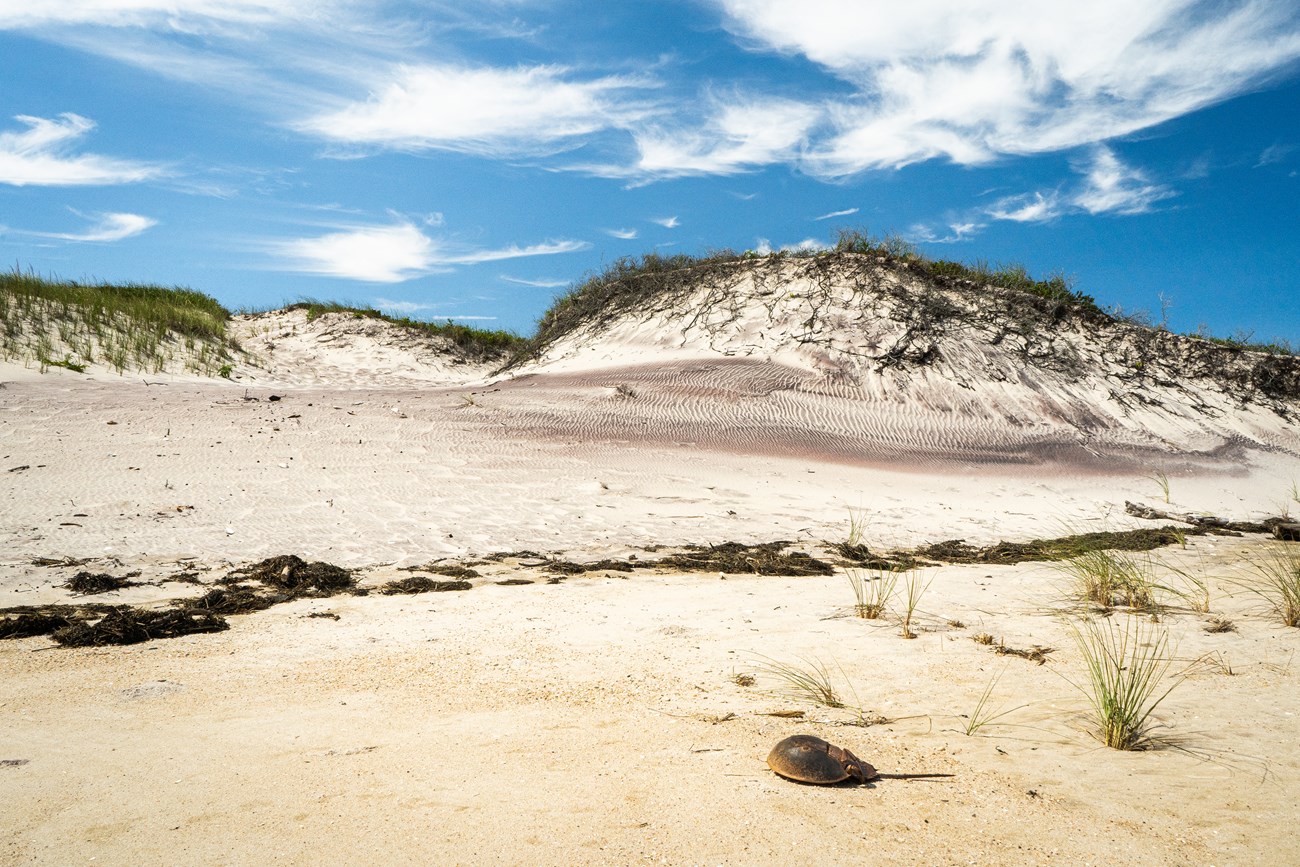
NPS Photo 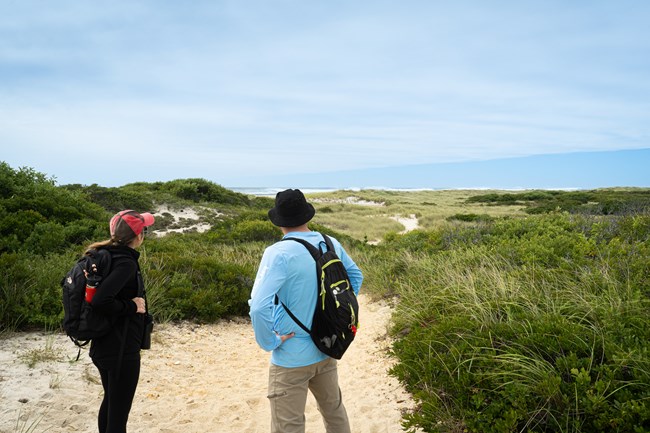
NPS Photo A Wilderness in Your BackyardThe Otis Pike Fire Island High Dune Wilderness is the only federally designated wilderness in the State of New York and it is just a short drive or train ride from New York City.
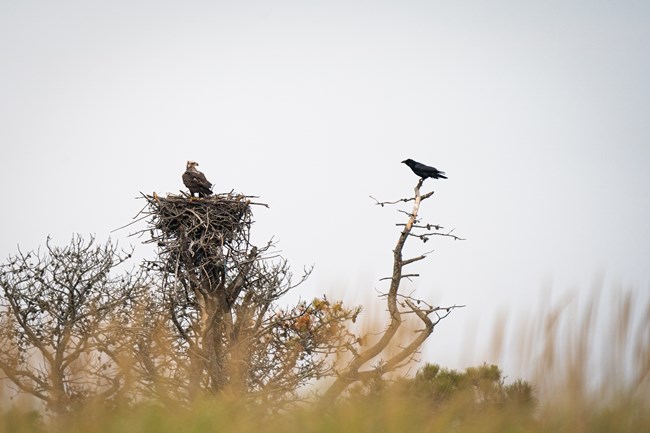
NPS Photo The Magic of WildernessClose your eyes for a moment and imagine wilderness. You may envision an icy crag reaching skyward, a lush green mountain meadow, or a deep, dark forest. The magic of wilderness is that each of us conjures a different landscape, and a different experience. 
NPS Photo Wilderness and Human HistoryAll national seashores like Fire Island, and the wilderness areas within, are the homelands of indigenous peoples since time immemorial. Historically, members of Long Island indigenous groups such as the Unkechaug, Secatogue, Shinnecock and Montaukett travelled to the barrier island to harvest food and other resources. These seasonal activities included whaling, fishing, harvesting shellfish, and hunting waterfowl and seals. After colonization, European Americans began whaling (using techniques learned from indigenous whalers), with operations leaving from and returning to the Fire Island beach. By the 19th century, the US Life Saving Service had set up several stations across Fire Island to aid ocean-going vessels and their passengers in distress. This included posts at Smith Point and Bellport Beach which are to today within the wilderness area. Hikers may find concrete pads and partially submerged wooden structures on the bay shore that are remnants from the US Life Saving stations (later US Coast Guard stations). Remains of wrecked ships can also seen from time to time protruding from the sand on the ocean beach adjacent to the wilderness. By the 20th century, small communities and modest vacation cottages were established within what is today wilderness at Long Cove, Skunk Hollow and Whalehouse Point. With little documentation that proved ownership of the land and the establishment of the national seashore in 1964, many of these part-time residents were forced to leave to establish an 8-mile natural zone between the Davis Park community and Smith Point. The dwellings between Watch Hill and Smith Point were demolished or removed by the National Park Service prior to the wilderness designation in 1980, though some construction remnants can still be seen from the Burma Trail. 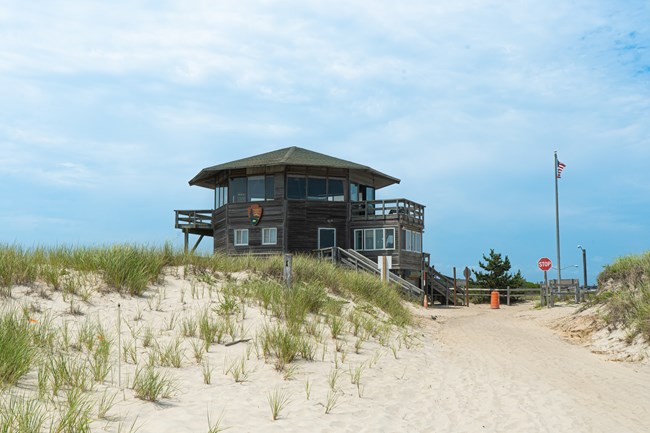
NPS Photo Plan Your Visit
From March 15 through Labor Day, pets are not permitted on the ocean beach in front of the wilderness to ensure that threatened and endangered beach-nesting shorebirds are protected. 
NPS Photo Wilderness DesignationThe Wilderness Act was signed into law on September 3, 1964. In 1975, what became known as the "Eastern Wilderness Areas Act" provided for the addition of areas that had been severely modified, including the authority to condemn and remove structures, to create designated wilderness in the East. The Otis Pike Fire Island High Dune Wilderness Act, signed on December 23, 1980, designated approximately 1,363 acres as wilderness in Fire Island National Seashore, and identified 18 more acres as potential wilderness. In October, 1999, a Federal Register notice announced that 17 acres of potential wilderness by that time fully complied with wilderness standards, and were officially designated as wilderness. In 2015, the NPS added the last acre of the 18 acres of potential wilderness identified in 1980. Hurricane Sandy destroyed structures on the land, making it eligible for designation and addition to the Seashore’s wilderness area. Explore Wilderness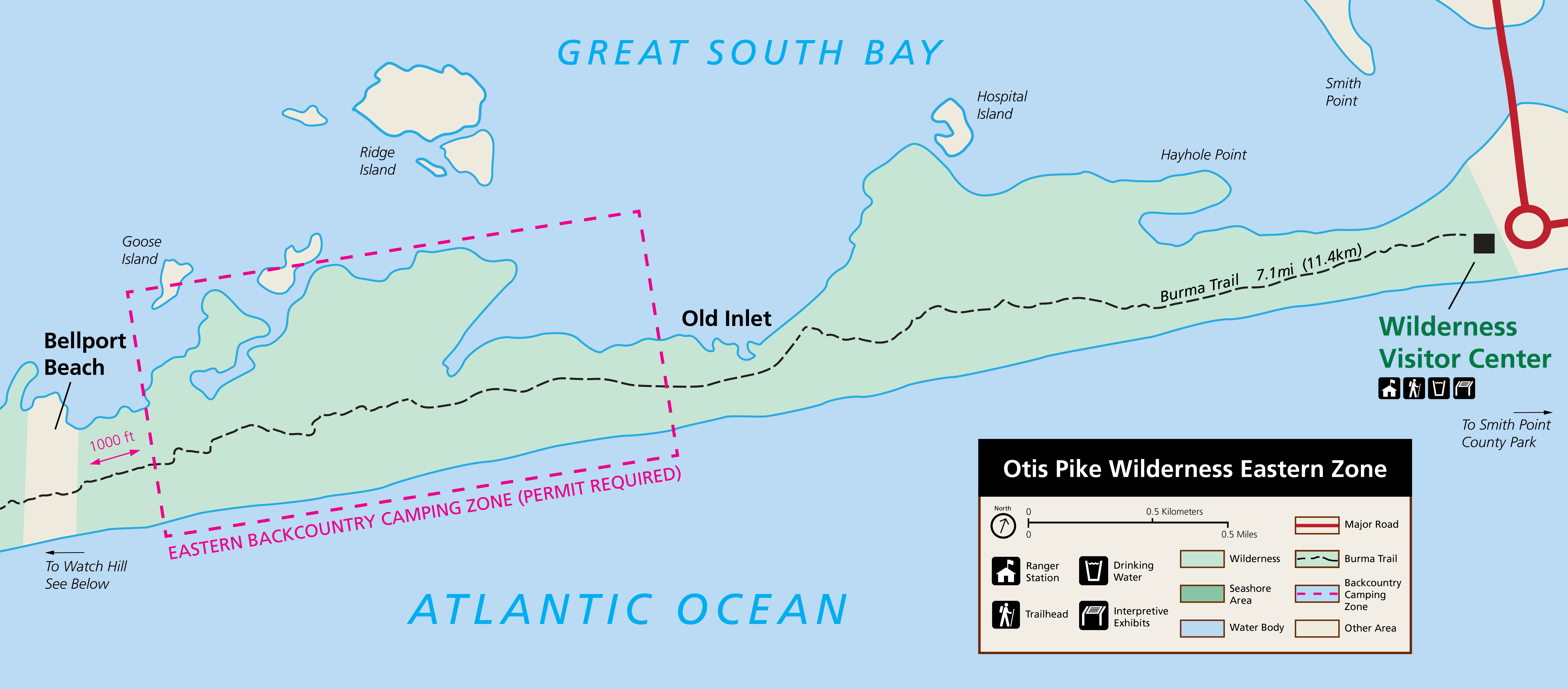
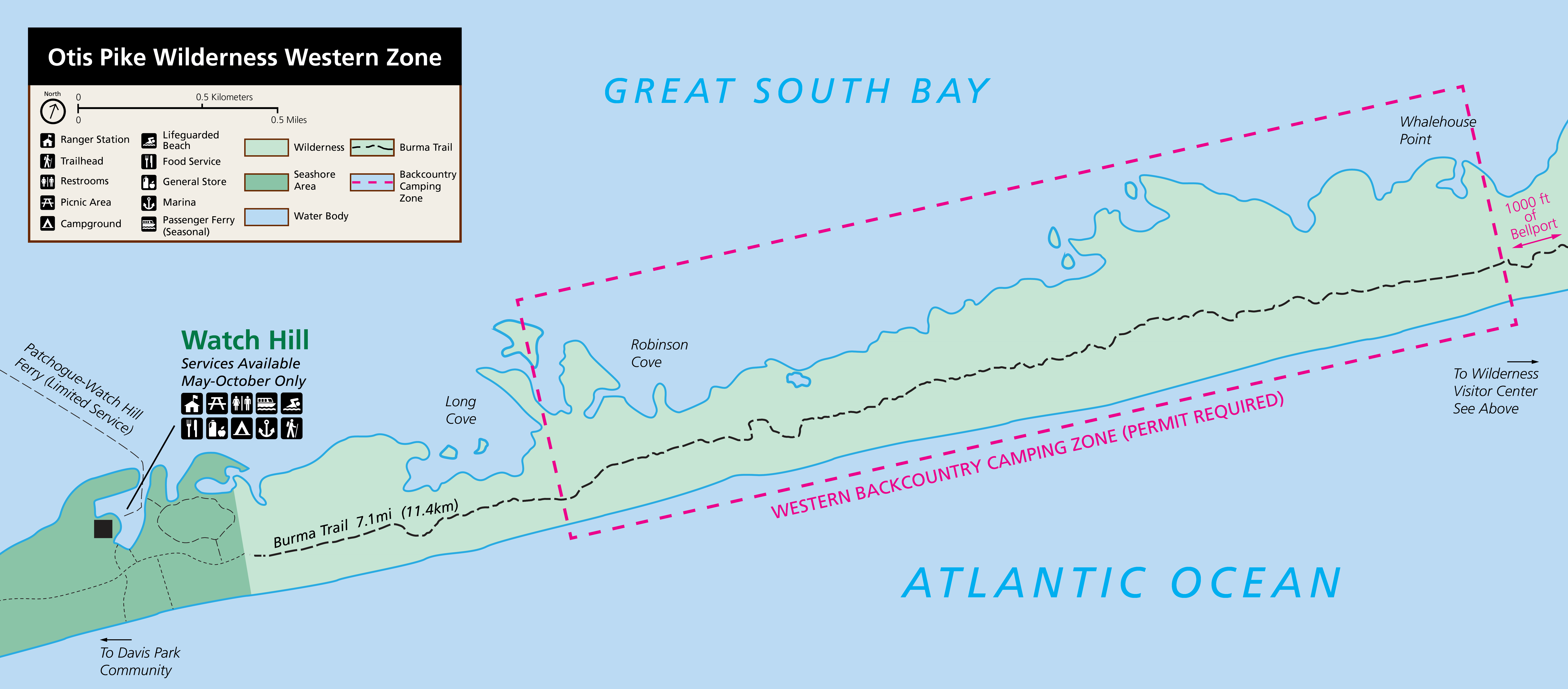

NPS Photo Hiking the Burma TrailDownload a trail map (PDF - 1.74 MB)The Burma Trail follows part of the trace of the old Burma Road, an off-road vehicle route used before the area's wilderness designation in 1980. Most of the road has disappeared under dunes or vegetation, but in some places it remains clear. Hikers may also find traces of human development, such as concrete pads used by the US Life Saving Service and Coast Guard, bricks used for summer bungalows, or the remnants of shipwrecks along the shore. While these reminders of the human past may seem to run counter to the idea of wilderness, you might think of the area as reclaimed by nature, rather than “untouched” or “pristine.” The Burma Trail allows access to wilderness for hikers, photographers, birders, campers, anglers, hunters, and others. Whether your visit is for a short stroll, a full-day outing, or an overnight trip, visitors should take care to keep this area wild and minimize their impact on the landscape and wildlife. Hikers typically access the trail at the Wilderness Visitor Center or Watch Hill. Those interested in hiking during cooler months from the western end can take a ferry and walk an additional mile from Davis Park (ferry service is limited between October and May – check the latest schedule). Interested in camping overnight? Learn more about backcountry camping in the Otis Pike Wilderness. Hike Smart
Visit our keyboard shortcuts docs for details
Join three teen poets from New York City on their first adventure to the wilderness of Fire Island National Seashore. And it's only a train ride away! As the poets explore this coastal wilderness with spoken word poetry, each begins to form a deeper understanding of their personal relationship with the natural world. |
Last updated: September 17, 2024
